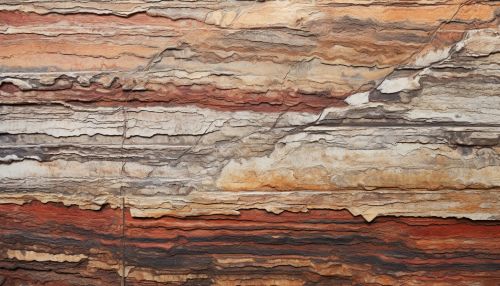Law of Superposition
Introduction
The Law of Superposition is a key axiom in geology and stratigraphy that addresses the relative age of rock layers and the objects within them. It states that in an undisturbed sequence of sedimentary rocks, each layer is younger than the one beneath it and older than the one above it. This principle allows geologists to determine the chronological order of a layer of sediments or rocks, fossils, or artifacts in a particular location.
Historical Background
The Law of Superposition was first proposed by the Danish scientist Nicolas Steno in 1669. Steno, who was studying the remains of ancient organisms embedded within rock layers, realized that the relative ages of the layers could be determined by their position in the sequence. This observation led him to propose the Law of Superposition, which has since become a fundamental principle in the field of geology.


Principles of the Law of Superposition
The Law of Superposition is based on the premise that sediment is deposited in layers over time. These layers, or strata, form a record of past events in Earth's history much like the chapters of a book. Each layer represents a specific period in time during which certain geological events occurred and organisms lived.
Sedimentary Layers
Sedimentary rock layers, or strata, are deposited horizontally. If these layers are undisturbed, the bottom layer will be the oldest and the top layer will be the youngest. This is the essence of the Law of Superposition and is a fundamental principle in the interpretation of sedimentary rock strata.
Fossils and Artifacts
The Law of Superposition not only applies to layers of rock, but also to fossils or artifacts embedded within those layers. The relative ages of fossils and artifacts can be determined by the layer in which they are found. For example, a fossil found in a lower layer of rock is considered older than a fossil found in an upper layer, assuming no disturbances in the rock layers.
Applications of the Law of Superposition
The Law of Superposition is used in the fields of geology, archaeology, and paleontology, among others.
Geology
In geology, the Law of Superposition is used to establish the relative ages of rock layers and the fossils within them. This information can be used to construct a relative geologic time scale, which does not provide specific dates, but rather arranges the sequence of events in Earth's history.
Archaeology
In archaeology, the Law of Superposition is used to determine the chronological order of archaeological artifacts in a site. By studying the layers of deposition, archaeologists can piece together the sequence of human occupation and cultural change over time.
Paleontology
In paleontology, the Law of Superposition helps in understanding the age of fossils and thus the evolution of life forms over geological time. By studying the sequence of fossilized organisms in rock layers, paleontologists can reconstruct a detailed history of life on Earth.
Limitations of the Law of Superposition
While the Law of Superposition is a key principle in geology, it does have limitations. It assumes that sedimentary layers have remained undisturbed since their deposition. However, geological processes such as folding, faulting, and intrusion can disrupt the original sequence of layers. In such cases, other principles such as the principle of cross-cutting relationships and the principle of inclusions are applied to interpret the geological history.
